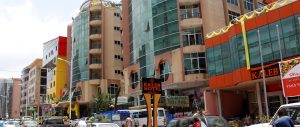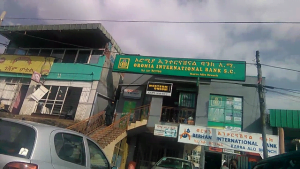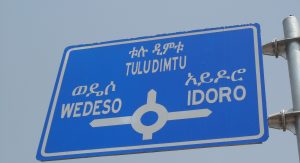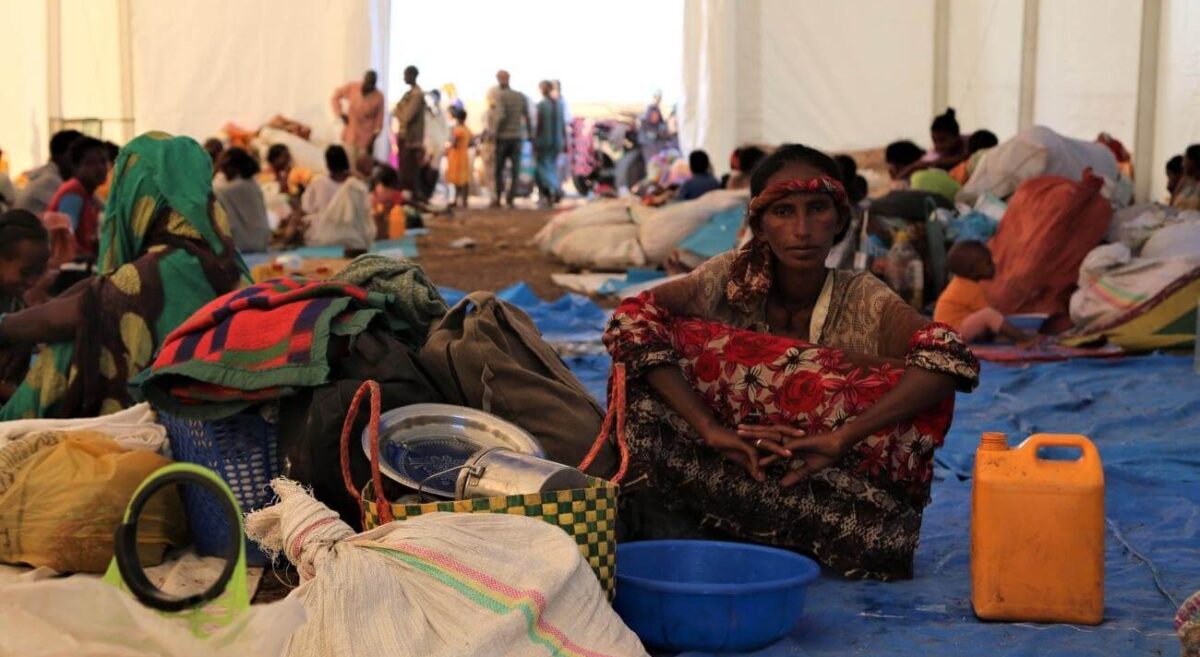Analysis: Addis Abeba: A city struggling under the weight of its failures triggers fresh minefield
Addis Abeba, July 10/2017 – Wednesday December 02/2015: it was not an ordinary day for five of six university students who were shuttling between the court room and their prison cells for nearly twenty months prior to that sunny morning. The university students were part of hundreds of Oromo university students rounded up by police during the April-May 2014 students’ protest in several universities within the National Regional State of Oromia, the largest of Ethiopia’s nine regional states. That morning on Dec. 02, a federal court in Addis Abeba found the five students “guilty” of violating various sections of Ethiopia’s infamous Anti-Terrorism Proclamation (ATP) and the 2004 Criminal Code.
But theirs was only the beginning. The beginning of a long overdue, but essential step testing the shaky relationship between the Federal Government of Ethiopia and the State of Oromia over the fate of the nation’s capital, Addis Abeba (a city known to its native Oromos as Finfinne).
It was also the first sign of what would eventually lead the federal government to declare a harsh State of Emergency, a slightly improved version of which is still in effect. It is a decree preceded by a yearlong anti-government protests that went from the modest demand of the protesting Oromo students in April-May 2014 to the more potent ones that saw, as time went by, firms owned by foreign as well as domestic companies seen as having cozy relations with the government reduced to ashes.
Front and center
Although a host of several public grievances have since been articulated as the reason why hundreds of thousands of protesters took to the streets in Oromia, and later on in Amhara regional states, throughout the protests in the former, Addis Abeba and its relationship with the Oromo remained front and center.
At first, the protesting students were mostly focused on their demand for a reconsideration of a newly unveiled Addis Abeba Master Plan. Many of them chanted the plan should be openly discussed with the public, especially those who were likely to be affected by its implantations: i.e, Oromo farmers living in areas surrounding the city.
“No keen observer will miss the point that, modest as it was, what is and always will be at the heart of their protest is this bubbling resentment informed by the dark political history of a city that pushed the Oromo away and became too hostile to them,” said Alamu Dinqaa, an Ethiopian refugee in the Kenyan capital Nairobi. Alamu was one of the countless students of the Addis Abeba University (AAU) who left the country following the early 2001 Oromo students protest against the federal government’s decision to relocate the seat of the Oromia regional state from Addis Abeba to Adama, 100 km south of the capital. Like hundreds of his compatriots, Alamu, who was a third year sociology students at the time, ended up in exile. Several were killed and thousands were detained. “We don’t forget that.”
“Ever since the establishment of the city as the political capital in the late ninetieth century, the Oromo have seen unparalleled displacements that continued until today,” Alalmu said, “failure to understand such elementary facts or to deny the political, economic, and socio-cultural disenfranchisement the Oromo have suffered as a result is failure to foresee how this will affect the country’s future in the long run.”
But whose failure, really? And at what cost?
There is a lot to unpack in Alamu’s use of phrases such as “failure to understand” and “elementary facts”. The ongoing emotionally charged (and divisive) debates Ethiopians are engaged in using social media platforms as well as media organizations based both inside and outside the country make the questions of “whose failure” and “at what cost” complicated, at least on the surface.
These latest debates on the fate of Addis Abeba followed a recent draft legislation to determine “Oromia’s Special Interest on Addis Abeba,” which was approved by the Council of Ministers and sent to lawmakers for endorsement, where it remains as of now.
Constitutionally speaking, the move by the Council of Ministers, in and of itself, is overdue by more than two decades; and as many things Ethiopia, it had to happen after hundreds were killed, maimed, jailed, and forced to disappear for demanding its legal dispensation.
The last push came after a statement issued in December 2016 by the Oromia regional state promising to establish “a task force to define the constitutional Special Interest of Oromia on Addis Abeba”. It was a statement issued in the midst of widespread protests that would nearly paralyze the country, from its politics to its economy.
 Photo: BBC
Photo: BBC
The immeasurable cost
Failed by the politics…
The “Special Interest of Oromia on Addis Abeba” is a legal lexicon first brought to light by the architects of the political parties who negotiated the 1991 Transitional Charter. A subsequent law (Proc. 7/1992) was introduced and became the basis to establish National/Regional Self Governments in what would later become ‘The Federal Democratic Republic of Ethiopia (FDRE)’. When the constitution of the FDRE was finally adopted in 1995, the ‘special interest’ clause was injected in the form of art 49(5).
Little was recognized that as time goes by Art. 49(5) would become a clause that would haunt the federal government and the Oromia regional state. In 22 years of its existence as part of the Supreme law of the country, there was no further legislation that would cement beyond doubt the practicalities of the four major points outlined in Art. 49(5) as the ‘Special Interest of Oromia on Addis Abeba’, i.e. Provision of social services, utilization of natural resources, joint administrative matters, and ‘Other similar matters’.
Full text: Art. 49(5) – “The special Interest of the State of Oromia in Addis Abeba, regarding the provision of social services or the utilization of natural resources and other similar matters, as well as joint administrative matters arising from the location of Addis Abeba within the State of Oromia, shall be respected. Particulars shall be determined by law.”
Addis Standard has been publishing several legal analyses highlighting what was at stake in the wake of the 2016 widespread anti-government protests in Oromia, (and in recognition of) the potential constitutional minefield in the offing.
The articulation of the content of this special interest has been a matter of quiet controversy between the Oromia government and the federal government. The law envisaged to come to effect in order to articulate it was never made. Oromia’s request for the law fell on deaf ears; and its formal request for interpretation from the constitutional interpreter (the House of Federation cum Council of Constitutional Inquiry) was rejected by the latter on the ground that they do not give ‘advisory opinion’ in the absence of ‘case and controversy’. In the meantime, the formal and informal land-grabbing continued to spread into the neighboring towns and districts. There being no formal institution that regulates inter-governmental relations –and the federal government being indifferent to the concerns of Oromia and the city government virtually absent from the scene since 2005 – the matter became increasingly irritating to the Oromia officials. Frustrated, in 2009, the legislature of Oromia, the Caffee, established a ‘Special Zone’ of towns and districts that surround the city of Addis Abeba. This, they hoped, would give them a focused mode of operation in relation to the specific problems of these towns that are hard hit by the spillover effect of Addis Abeba’s problems (such as wanton destruction of the forest, environmental pollution due to emissions from factories and flower farms, illegal constructions and settlements, all of which was buttressed by absence of governance and corruption). Please see Addis Standard, August 20/2015.
…
At last, the politics pretended it wanted to get it right, and on June 27/2017, what looked like a draft bill came around. But it is replete with broken legal dialect and a rotten politics true to its base. It is, at best, as this magazine once said, an “affirmation of denial.”
But it is also a move besieged by:
…fear & suspicion
The mere idea of a regional state asserting a constitutional authority over a capital city frightens many residents of the city who identify themselves as indifferent to the politics of the land. “The last thing Addis Abeba wants right now is a political debate on who owns the city,” said Tarekegn Admas, a graduate of business administration from the AAU and who is running his own business of ‘houses and cars’ brokerage. “In the last two weeks since the news of the draft bill came out, three of my clients with whom I was finalizing a land deal have canceled our negotiations. This is not good for business,” Tarekegn said, “It makes people wary of the future administrative process.”
But beyond his fear of “administrative complications” Tarekegn said he also fears the assumption that “once the Oromos take over the city, they will displace us all.”
“But these were issues that needed to be addressed for the last 22 years,” said a professor of law at Addis Abeba University. “Apparently, the authors of the current constitution inserted the phrase “joint administrative matters” in Art. 49(5) hoping to stir clear the legal jurisdictions of the city administration (which is responsible to the federal government), and the Oromia regional state (a state under whose geographic delimitation Addis Abeba is found). These are mostly matters such as management of land-related issues”, said our interviewee who wants to remain anonymous.
According to him, the absence of a clear legal discourse from the wider public space is what led to these wild assumptions. “The truth of the matter is, Addis Abeba will not be the only city in the world to be administered by two or more joint federal entities.”
The ‘Special Interest’ draft bill, which is now in the hands of the federal law makers, mentions “joint administrative matters” but leaves out the details to be outlined by a future “joint council” to be formed by the city administration and the Oromia regional state; a “joined council” to be sanctioned under the jurisdiction of “the federal government.”
For now, like hundreds in his field, Tarekegn continues to make a lucrative business from brokering land deals in locations both in the inner city and around the city, where destitute city residents and Oromo farmers respectively, are selling their lands for fear of unavoidable displacement by the federal government for development projects. But at the heart of land deals in and around the city is a lucrative business stained by corruption from top to bottom, as this recent article on Addis Zemen, a state daily newspaper in Amharic, sampled one such case.
A 2017 research on “The State of Addis Abeba,” conducted by UN-HABITAT revealed that “The [Addis Abeba] city administration collects land rents at rates set long ago and can therefore not reap the full benefits of its agglomeration economy and the recent economic boom. Land rents, roof tax and rental income on city-wide properties are all well below today’s market rates and need upward revision if the city is to enhance its revenue.”
But that is a stark opposite from the reality; the reality is, land lease in Addis Abeba is a booming market defined by “neither logic nor theory.”
…
And if Tarekegn’s is a “fear of administrative complication”, the pending draft bill does no good to alleviate politically-driven suspicions among many a resident of the city. For instance, a prominent business man took to his Facebook page to square the draft bill with “Destroy Addis Abeba–Adios Ethiopia”. Under the garb of advocating for a “democratic and prosperous” Addis Abeba that would become the “beacon of Africa”, he called the draft bill “a foolish edict of injustice that is discriminatory and contrary to the fundamental principles of the Constitution.” His message resonates among hundreds of the city’s dwellers.
In an emailed interview with Addis Standard, Selamawit Kifle, a bar owner who is born and raised in the city, described her suspicions about the draft saying it was nothing but a plot by “ethnic politicians who want to chock the hardworking urban residents to their own financial gains.” Selamawit, who goes by a different name on Facebook and who is fiercely advocating against the draft bill, answered to AS’s questions via her Facebook. “The people of Addis Abeba don’t want this kind of politics. We just want to work and leave in peace. But why are these politicians bent on torturing us? I don’t understand it.” Selamawit is not concerned by any reference to the constitution. “Why should that be my concern? I am not a lawyer,” she ended our interview.
… and urban elitism
While Selamawit’s views are shared by many ordinary citizens on the ground, the draft bill is facing another fierce criticism from a more sophisticated “urban dwellers who want the title of ethnic-free elites,” to use the words of Dr. Yirgadis Belay, a constitutional lawyer counseling several foreign business companies on Ethiopian legal issues.
In an attempt to respond to what’s mentioned as “provision of social services” in Art. 49(5) of the constitution, the draft bill mentioned, among others, (and albeit in no certainty), the name Finfinne, the indigenous name of the city, to become the co-equal name with that of Addis Abeba; Afaan Oromo (Oromo language) to become the co-equal working language of the city administration; and if found necessary, the current names of neighborhoods, streets and public squares may be restored to their original names; the city administration would, again if necessary, work with the Oromia regional state to facilitate the opening of cultural centers, museums, libraries that carry books reflecting the history of the Oromo people, and primary schools that teach children who want to learn in Afaan Oromo, as well as public broadcasting services that reflect and represent the Oromo people.
For the Oromo who resent their absence from the economic, social, cultural and political features of a city that they affectionately call “Haandhuura Oromo” (the belly button of the Oromo), this section in the draft bill may have come as a sight to a sore eye; but it is a passage that was received by a collective gasp of anger both from those who take pride in their urban identity, to those who despise Ethiopia’s current federal arrangement, to those who fiercely criticize the exclusion of the city dwellers in the process of drafting the bill, and those who are simply unsettled by the rising assertiveness of Oromo social media activism. (Take for example an online radio host who went as far as calling last year’s protesters who were killed by state security “fools who were duped into their death by activists”; or his a co-host, who, in a second segment in the same show, dismissed the current constitution as baseless and irreverent. Both were comments solicited in defense of Addis Abeba against the invasion of a city by what is mentioned in the draft bill.
“Fortunately or unfortunately, depending on how you look at it, urban elitism in Ethiopia has several faces,” said Dr. Yirgadis, “for me, it represents a mixed paradox that hates the short colonial history of Italy’s occupation of Ethiopia in the 1930s, but loves and embraces the street names, the names of the bakeries and cafés it left behind. I see that it often manifests itself and takes pride in colonial names such as Kasanchis, Piassa, and Churchill Road but reacts angrily to any suggestion that these names had indigenous names.” (The Oromo know Kasanchis was Qarsaa, Piassa was Birbirsa Gooroo and Malkaa Daabus was the Churchill Road).
“There is a whole package of identity that is attached to these names; and for city dwellers who take pride in being apolitical and free of the so-called ethnic politics, it is the urban pop culture that matters over constitutionalism,” said Dr. Yirgadis, “it is a different set of mentality on its own right; an identity of a city where one can enjoy anonymity regardless of one’s class, status, religion, ethnicity, political affiliation, and sexual orientation.”
Ironically, however, few business entities are quietly, but assertively naming their businesses after indigenous names of particular areas and streets. And a newly built ring road linking eastern Addis Abeba to Kality, in the south and is the extension part the Addis-Adama expressway, uses all its location indicators by indigenous names. “This poses no danger to urban identity; neither physically nor mentally,” said Dr. Yirgadis, “neither are they a topic of discussion.”
But what of a failing city itself? Any concern?
Be that as it may, what is conspicuously missing from the current heated, and at times emotional, debates Ethiopians are having over the draft bill, by extension the political, economic and social fate of Addis Abeba, is the very well-being of the city itself. Off the beaten track of these politically charged debates, Addis Abeba is a city crumbling under the weight of its own failures.
On Friday June 30, 2017, Selam Tadesse, a young woman who lived around Kasanchis (Qarsaa), was walking home from work when she was stabbed by a group of three men who just wanted to snatch her mobile phone. Selam died of her injuries in a hospital and was buried on July 02. Two of the men were apprehended by onlookers and the third is still at large. The residents of the city know that Selam’s death is just one incident showing the alarming rise in crime rates in a city acclaimed by many as “one of the safest cities in Africa” as recently as 2009. Many know that crime rate in the city has become a silent epidemic.
Turn to another topic. A city with one of the highest population densities in Africa (an estimated 5,165 persons per square kilometer), is imploding from the pressure of urban migration, which is manifested in housing crisis that was characterized as “70% informal” by the UN-HABITAT. Unemployment rate stands at 21.2%. The breakneck speed by which the construction of high rising buildings for the rich lack viable designs to withstand the test of a rainy season. Addis Abeba continues to be a city that does not have a modest way to dispose its garbage, a draining cost to the basic dignity of the city’s rich, poor and vulnerable alike.
No place for garbage
With the monthly income for 60% of employed households standing at or below US$68 Addis Abeba is no city for the poor and the lower middle class; and a government low-cost housing project is proving to be a state-sponsored scheme to rob these poor and lower middle-class citizens off of their savings; and more often than not, several neighborhoods of the city go without running water for weeks at a time.
A sign of administrative deficit among and between various state-owned utilities means even good-hearted attempts to build public infrastructure projects pose more danger to the city dwellers and the environment than anything else seen in recent history. And, at any given moment, Addis Abeba is an open season of urban cesspool; 75% of its residents (and yes, that includes Selamawit and Tarekegn) use “pit latrines discharging to open drains.”
Residents may take comfort in the anonymity this city of millions grants them and may, in return, defend the city against what is inscribed in the supreme law of the land; but there is only so much anonymity a city of alarming crime rates, failing infrastructure and a grinding poverty can hide. “Neither should what is inscribed in the supreme law of the land be a means to look past the people in a city taken hostage by its own failures,” said Dr. Yirgadis Belay.
The ‘home’ no one wants
…
Thursday November 17/2016: in the morning the judges at the Federal High court 19th criminal bench had an important verdict to pass. Inside the court room, family members, friends, diplomats and journalists sat patiently to hear the verdict on five of the six university students accused of terrorism and criminal charges. When the judges finally delivered their verdict, sentencing five of the six to various terms in prison, the room was quickly filled with a collective gasp of weeping coming from the families and loved ones attending the court hearing. The five defendants were part of hundreds of Oromo University students rounded up by police during the April-May 2014 against the now shelved Addis Abeba Master Plan. But the first defendant, Abebe Urgessa, was not in the court room, he was held in Showa Robit prison, some 200k northeast of Addis Abeba, and the police did not bring him that day. In a separate trial held on November 28, 2016, the judges sentenced Abebe to 15 years in prison.
Because theirs was only the beginning, on Thursday July 13, another set of judges at the federal court passed another decision on 17 of the 22 opposition party leaders and members to defend terrorism and criminal charges brought against them by federal prosecutors. They were all detained shortly after the 2016 Oromo protests have erupted, once again with the issue of Addis Abeba front a center.
And, Alamu Dinqaa? While dozens who fled the country at the same time did get their asylums granted to different countries around the world, on June 02/2017, Alamu’s asylum application to go to the US was rejected, for third time.
Like Selamawit, he continues to use social media, but for a different reason. And that is Ethiopia.
Photos: except for one, all photos by Addis Standard





 Photo: BBC
Photo: BBC




